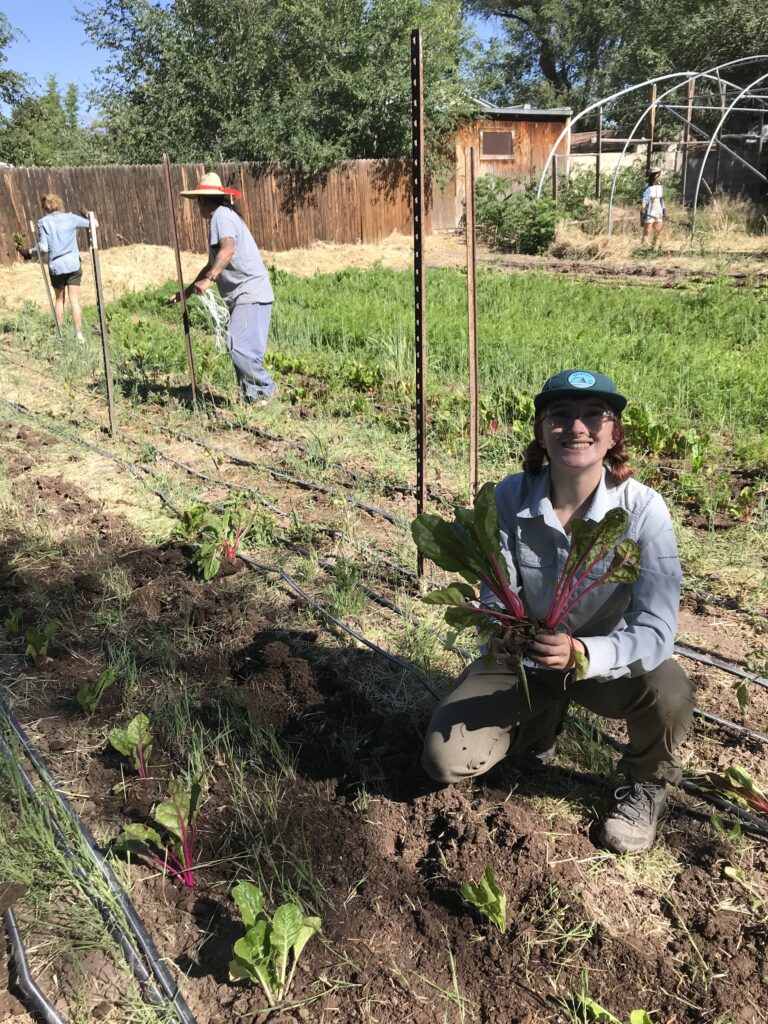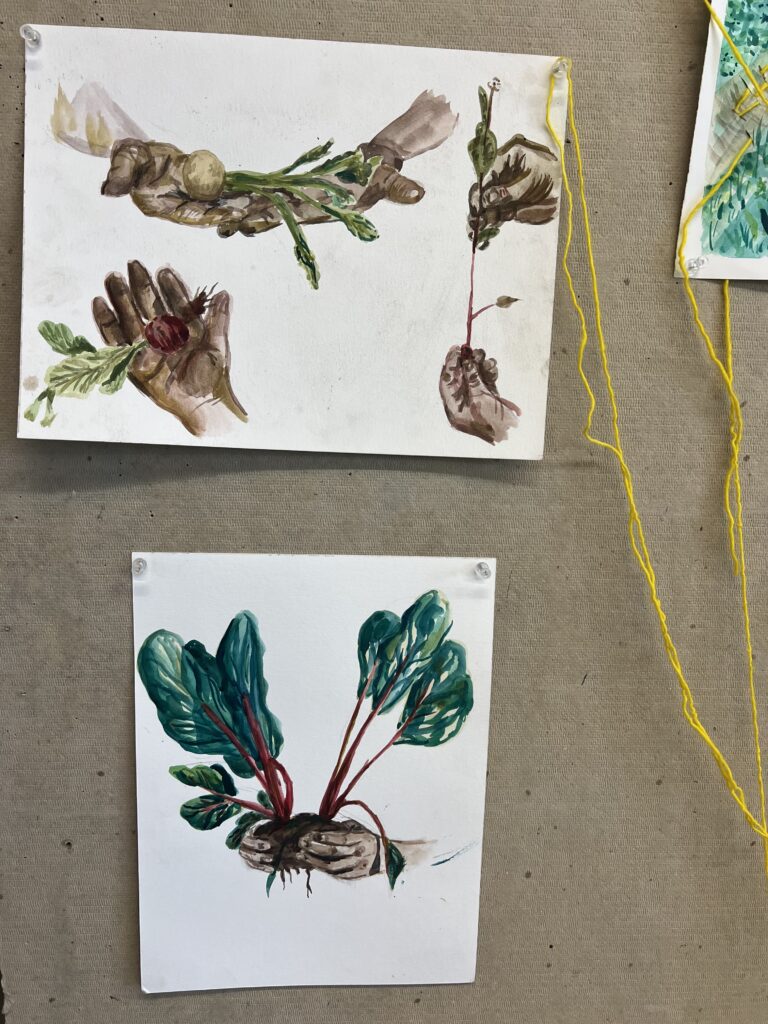Boots laced up and skin lathered with sunscreen, we wove our way through the neighborhood until we saw Fidel. He flashed us a wide smile and welcomed us, handing us gardening gloves and materials to haul over to the rows of vegetation. Inside the property, he oriented us to the yard and his process.

Fidel works with his neighbors to farm on their land. They let him grow vegetables in their yards with a handshake agreement. This turns their yard into a mini farm that produces year-round. Today, we stood in Erin’s yard, admiring the rows and rows of chard, tomatoes, carrots, and turnips that Fidel has cultivated.
We got to work. Some of us set up posts for the tomatoes to grow against, some dug holes in the earth for planting, and some cleaned out the open-air greenhouse. The Albuquerque sun bore down on us, but we took refuge in the shade when possible.
I was tasked with transplanting rainbow chard. The multicolor plants were growing in rows, but were too crowded and wouldn’t reach their full potential when competing for resources in such tight placement. We dug holes the next row over, and someone carefully extracted the chard plants in need of moving. My job was to place these plants in the soil. I took one in my hand; a jumble of roots twisting out of a clump of moist dirt, stems the color of sunshine and bubblegum, and deep green leaves reaching for the sky. I separated the individual chards and laid them in the soil. Fidel showed me how to bend the plants so the roots faced East and the stems bent upwards to the sky. He said that energy flows from the East, and this way, the roots would maximize energy intake.
My hands loved the feeling of the damp soil. In the shade, the soil was cool and easily molded over the roots of the chard to envelop them back into the earth. It had been a while since I was involved in gardening. Back home, I usually only scavenged the strawberries from my mom’s garden. It felt empowering to be a part of the growing process and to connect with the Earth with my hands and knees caked in soil. I felt very present as I planted chard after chard. I admired the jewel-colored stems and felt like I was returning to something – returning to being one with the Earth, with the food system, and returning to my child self as I played in the dirt.

A pile of bolted turnips accumulated at my feet. Fidel explained that because of the warm winter, the plants stopped sending energy to their roots, the fruit, and instead up to the flowering stem. This resulted in small, underdeveloped turnips that flowered too early in the season. This blew my mind. Here in front of me were physical examples of the effects of climate change.

Seeing the shriveled-up turnips caused me to ask a lot of questions: how will our food systems be affected by climate change? How do we adapt our food systems to the changing climate?
Some of my questions were answered in the readings we did. In “Reseeding the Food System,” Rowan White explained the need for better seed literacy and diversity. This means understanding where our food comes from and embracing a wide variety of vegetation. Seed banks should no longer tuck away seeds, but instead integrate them into daily life so that the seeds can adapt to the environment and become more resilient. I also read about the need to embrace local and seasonal produce in order to support our own communities and rely less on the transportation of goods.
Our day spent with Fidel, entrepreneur and farmer, inspired me to get more connected with the land and with the food I eat. Asking, “Where did these cherries/peppers/tomatoes come from?” at the dinner table can facilitate this connection, even if it only leads to speculation. Getting involved in community gardens or helping out with my mom’s garden at home will be a good way to continue applying what I learned with Fidel.
Food sustainability is a key part of resilience during changing times. All living things need nourishment, and we must ensure that our farming practices are sustainable and ethical. We can learn from farmers taking regenerative approaches and appreciate local produce. I want to continue educating myself and others about resilience in agriculture, and creating art in the process!
